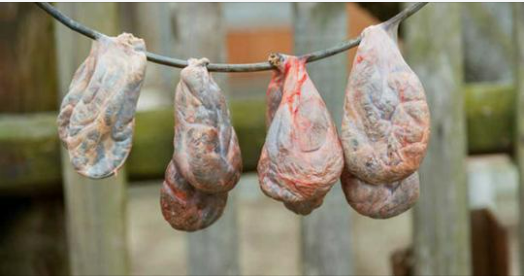Castoreum is a natural flavoring sometimes found in vanilla or strawberry-flavored foods. Surprisingly, it’s not a synthetic chemical or an exotic plant. Instead, it’s an excretion from the anal glands of beavers. Historically, this unique substance has been used in medicines, soaps, and even foods. However, you won’t see “castoreum” listed as an ingredient on your ice cream or strawberry syrup. Instead, it falls under the umbrella term “natural flavorings.”
The Use of Castoreum in Flavoring
Beavers use castoreum to mark their territories and recognize each other. Despite its somewhat surprising origin, there’s no need to worry about consuming it unknowingly. The FDA considers it safe, citing “a long history of use in flavoring and fragrances with no reported adverse reactions.” Yet, it’s rarely used today. One reason is that it can’t be certified as kosher. More importantly, it’s very expensive to produce.
According to Gary Reineccius, a flavor chemist at the University of Minnesota, “In the flavor industry, you need large quantities of material. You can’t exactly farm beavers, so castoreum ends up being very expensive and unpopular with food companies.”
The Niche Market for Castoreum
Michelle Francl, a chemist at Bryn Mawr College, reassures that due to its high cost, beaver excretion is unlikely to be a hidden ingredient in foods. Plants like vanilla orchids, which are easier to grow and harvest on a large scale, are far more common. However, castoreum does find its way into niche products like bäversnaps, a Swedish liquor. In such cases, it’s marketed proudly. The substance is extracted by trapping and killing beavers, then removing and processing their castor glands. Alcohol extracts castoreum from these glands, similar to how vanilla extract is derived from plants.
Historical and Medicinal Uses of Castoreum
Interestingly, castoreum has been a versatile remedy throughout history. It has treated stomach ailments, fevers, and mental illnesses, and has been included in soaps and lotions. At one point, it was even added to cigarettes for a sweeter aroma. Castoreum contains salicylic acid, the active ingredient in aspirin, demonstrating its medicinal value despite its unusual origin.
The substance was discovered during the peak of the fur trade, which nearly drove beavers to extinction in North America and Eurasia. Beavers were almost wiped out in the 16th century in Europe and the 19th century in North America due to overhunting.
The Role of Castoreum in Beavers’ Lives
For beavers, castoreum is essential. They use it to mark their territory and identify family members, as each beaver’s scent is unique. The excretion also helps make their fur and tails slick and water-resistant.
Reassurance About Your Vanilla Ice Cream
Despite the sweet-smelling vanilla aroma derived from beavers’ diet of leaves and bark, you don’t have to worry about castoreum in your food. It’s not commonly used because of its cost and the availability of other flavoring alternatives.
“If food companies can find anything else to substitute for vanilla or create a strawberry flavor, they will,” says Reineccius. “It’s actually not very hard to make a basic strawberry flavor that you would recognize with just two compounds.”
So, rest easy knowing your favorite vanilla ice cream or strawberry-flavored treat is safe and unlikely to contain this unusual ingredient.


